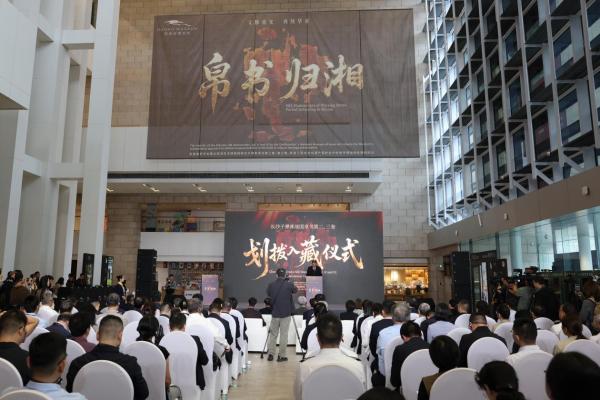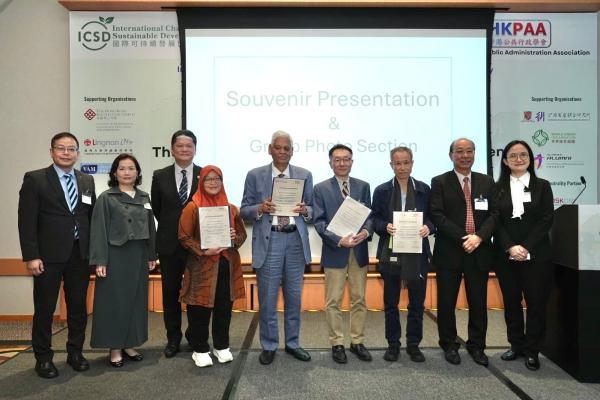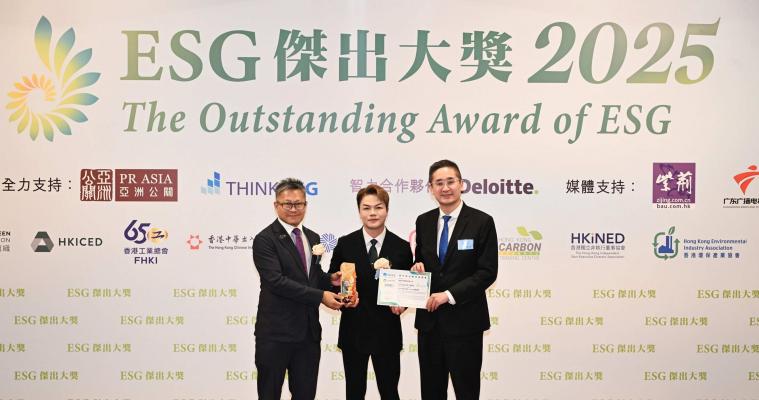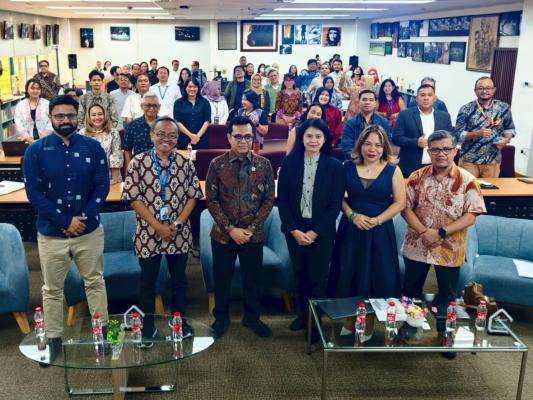- Home
- MediaOutReach
- National Treasure Returns to 'Hunan':The Zidanku Chu Silk Manuscripts(Volumes Ⅱ and Ⅲ)Incorporated into the Collection of Hunan Museum
National Treasure Returns to 'Hunan':The Zidanku Chu Silk Manuscripts(Volumes Ⅱ and Ⅲ)Incorporated into the Collection of Hunan Museum
Kamis, 23 Oktober 2025 | 09:31

CHANGSHA, HUNAN -
Media OutReach Newswire
- 22 October 2025 - On the morning of October 13, a ceremony for the
transfer and incorporation of the Zidanku Chu Silk Manuscripts (Volumes Ⅱ
and Ⅲ), namely The Five Elements Decree and The Offence and Defense
Divination, into the collection of Hunan Museum was grandly held.
Present at the ceremony were guests from both China and the United States, including Rao Quan, Vice Minister of Culture and Tourism and Director of the National Cultural Heritage Administration; Liu Hongbing, Member of the Standing Committee of the Hunan Provincial Party Committee and Director of the Publicity Department of the Hunan Provincial Party Committee; Jiang Difei, Vice Governor of Hunan Province; Tang Wei, Vice Director of the National Cultural Heritage Administration; and Chase Robinson, Director of he Smithsonian's National Museum of Asian Art in the United States. All of them witnessed this historic moment together.
During the ceremony, Tang Wei, Vice Director of the National Cultural Heritage Administration, read out the Official Consignment Letter for the Zidanku Chu Silk Manuscripts. Chase Robinson, Director of the Smithsonian's National Museum of Asian Art, delivered a speech. Liu Hongbing, Member of the Standing Committee of the Hunan Provincial Party Committee and Director of the Publicity Department of the Hunan Provincial Party Committee, and Rao Quan, Vice Minister of Culture and Tourism and Director of the National Cultural Heritage Administration, delivered speeches respectively.
At the end of the ceremony, Director Rao Quan and Minister Liu Hongbing handed over the Inventory of the Zidanku Chu Silk Manuscripts. This move marked the official return of the treasure works Order of The Five Elements Decree and The Offence and Defense Divination, which had been lost overseas for 79 years, to their homeland and their incorporation into the collection of Hunan Museum.
The Zidanku Chu Silk Manuscripts are the earliest silk manuscripts with the significance of classic works ever discovered in China. They systematically record contents such as astronomy, calendar, cosmology, and military divination in the pre-Qin period, and are indispensable precious material materials for the study of archaeology, philology, document studies, and the history of thought. The successful return of Order of The Five Elements Decree and The Offence and Defense Divination this time is a model case of China's recovery of lost cultural relics through international cooperation, and their return and incorporation into the collection can be regarded as another major landmark achievement. This move not only supplements a crucial material chapter to the genealogy of Chinese civilization, but also the successful practice itself is a direct embodiment of the country's cultural confidence and soft power. It sends a clear message to the world about China's unwavering commitment to safeguarding its civilizational heritage, while providing a successful "Chinese approach" for the repatriation of such cultural assets.
As the original excavation site of the silk manuscripts, Hunan is the most ideal home for these treasures. Their return will enable Hunan Museum to combine the only existing original fragment of the Zidanku silk manuscript in China (which is in its collection) with other cultural relics of the Chu and Han dynasties to build a more systematic and in-depth research, interpretation, and exhibition system for Chu culture. With this as the core, the museum is committed to building a world-class academic highland for Chu culture research.
The return of the silk manuscripts is not only a "repatriation through time and space" of the memory of civilization, but also a harmonious echo of cultural exchanges between China and the United States. Hunan Museum stated that it will take this as a prologue to expand international cooperation, allowing these thousand-year-old ancient scrolls to shine with the glory of the times in their homeland and jointly writing a new chapter in the inheritance of civilization with the world.
Present at the ceremony were guests from both China and the United States, including Rao Quan, Vice Minister of Culture and Tourism and Director of the National Cultural Heritage Administration; Liu Hongbing, Member of the Standing Committee of the Hunan Provincial Party Committee and Director of the Publicity Department of the Hunan Provincial Party Committee; Jiang Difei, Vice Governor of Hunan Province; Tang Wei, Vice Director of the National Cultural Heritage Administration; and Chase Robinson, Director of he Smithsonian's National Museum of Asian Art in the United States. All of them witnessed this historic moment together.
During the ceremony, Tang Wei, Vice Director of the National Cultural Heritage Administration, read out the Official Consignment Letter for the Zidanku Chu Silk Manuscripts. Chase Robinson, Director of the Smithsonian's National Museum of Asian Art, delivered a speech. Liu Hongbing, Member of the Standing Committee of the Hunan Provincial Party Committee and Director of the Publicity Department of the Hunan Provincial Party Committee, and Rao Quan, Vice Minister of Culture and Tourism and Director of the National Cultural Heritage Administration, delivered speeches respectively.
At the end of the ceremony, Director Rao Quan and Minister Liu Hongbing handed over the Inventory of the Zidanku Chu Silk Manuscripts. This move marked the official return of the treasure works Order of The Five Elements Decree and The Offence and Defense Divination, which had been lost overseas for 79 years, to their homeland and their incorporation into the collection of Hunan Museum.
The Zidanku Chu Silk Manuscripts are the earliest silk manuscripts with the significance of classic works ever discovered in China. They systematically record contents such as astronomy, calendar, cosmology, and military divination in the pre-Qin period, and are indispensable precious material materials for the study of archaeology, philology, document studies, and the history of thought. The successful return of Order of The Five Elements Decree and The Offence and Defense Divination this time is a model case of China's recovery of lost cultural relics through international cooperation, and their return and incorporation into the collection can be regarded as another major landmark achievement. This move not only supplements a crucial material chapter to the genealogy of Chinese civilization, but also the successful practice itself is a direct embodiment of the country's cultural confidence and soft power. It sends a clear message to the world about China's unwavering commitment to safeguarding its civilizational heritage, while providing a successful "Chinese approach" for the repatriation of such cultural assets.
As the original excavation site of the silk manuscripts, Hunan is the most ideal home for these treasures. Their return will enable Hunan Museum to combine the only existing original fragment of the Zidanku silk manuscript in China (which is in its collection) with other cultural relics of the Chu and Han dynasties to build a more systematic and in-depth research, interpretation, and exhibition system for Chu culture. With this as the core, the museum is committed to building a world-class academic highland for Chu culture research.
The return of the silk manuscripts is not only a "repatriation through time and space" of the memory of civilization, but also a harmonious echo of cultural exchanges between China and the United States. Hunan Museum stated that it will take this as a prologue to expand international cooperation, allowing these thousand-year-old ancient scrolls to shine with the glory of the times in their homeland and jointly writing a new chapter in the inheritance of civilization with the world.
BERITA LAINNYA

Kamis, 23 Oktober 2025 | 10:38

Kamis, 23 Oktober 2025 | 09:31

Kamis, 23 Oktober 2025 | 09:31

Kamis, 23 Oktober 2025 | 09:29

Kamis, 23 Oktober 2025 | 09:28

Kamis, 23 Oktober 2025 | 09:27

Kamis, 23 Oktober 2025 | 09:25

Rabu, 22 Oktober 2025 | 13:14


























